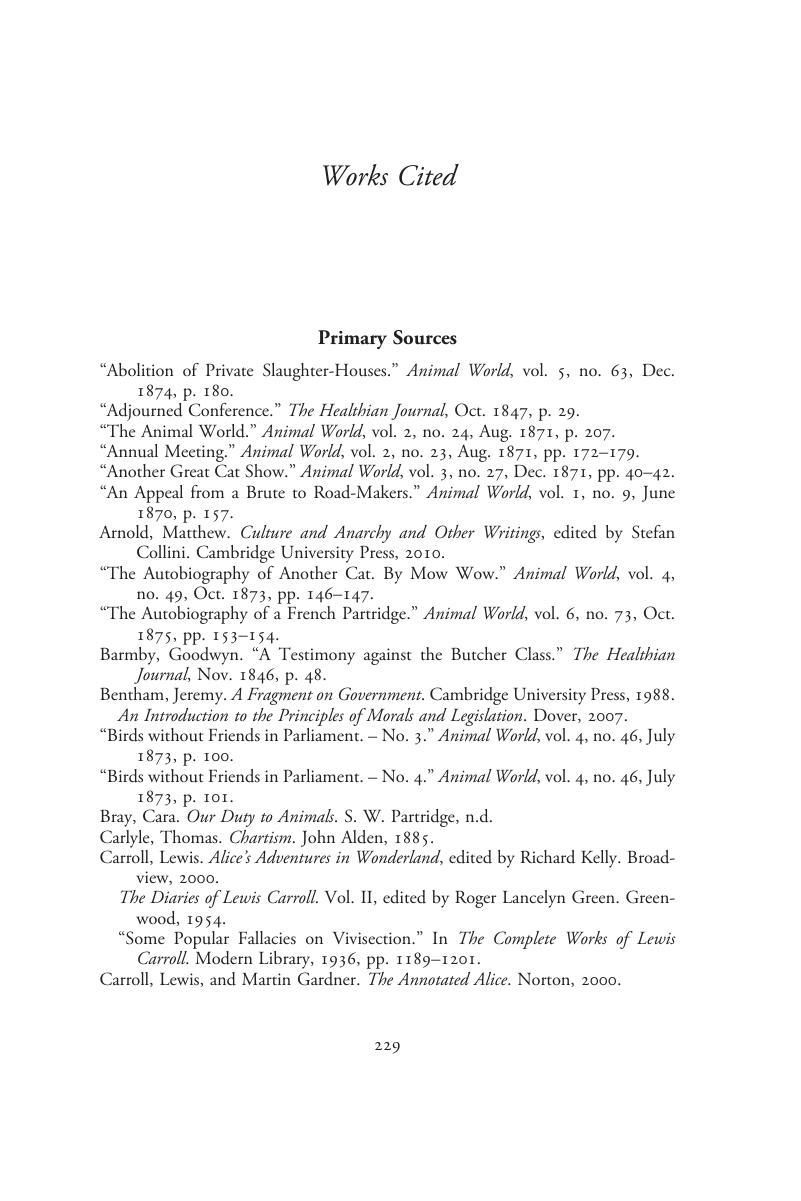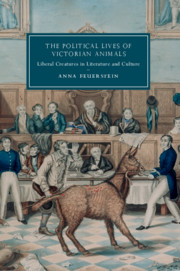Book contents
- The Political Lives of Victorian Animals
- Cambridge Studies in Nineteenth-Century Literature and Culture
- The Political Lives of Victorian Animals
- Copyright page
- Dedication
- Epigraph
- Contents
- Figures
- Acknowledgments
- Introduction
- Part I Anti-Cruelty Legislation and Animal Welfare
- Part II Democracy, Education, and Alternative Subjectivity
- Part III The Biopolitics of Animal Capital
- Coda
- Works Cited
- Index
- Cambridge Studies in Nineteenth-Century Literature and Culture
- References
Works Cited
Published online by Cambridge University Press: 08 June 2019
- The Political Lives of Victorian Animals
- Cambridge Studies in Nineteenth-Century Literature and Culture
- The Political Lives of Victorian Animals
- Copyright page
- Dedication
- Epigraph
- Contents
- Figures
- Acknowledgments
- Introduction
- Part I Anti-Cruelty Legislation and Animal Welfare
- Part II Democracy, Education, and Alternative Subjectivity
- Part III The Biopolitics of Animal Capital
- Coda
- Works Cited
- Index
- Cambridge Studies in Nineteenth-Century Literature and Culture
- References
Summary

- Type
- Chapter
- Information
- The Political Lives of Victorian AnimalsLiberal Creatures in Literature and Culture, pp. 229 - 246Publisher: Cambridge University PressPrint publication year: 2019



